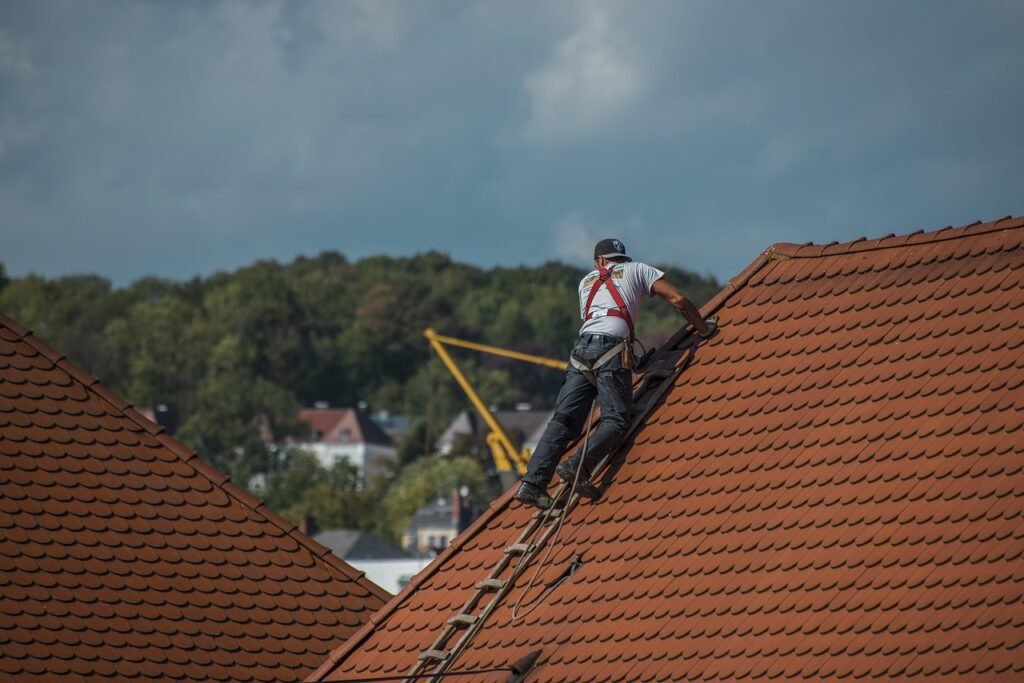AcrylDach also known as an acrylic roof, combines science and ingenuity to deliver exceptional clarity, strength, and energy efficiency. As sustainability and design trends evolve, unlocking the benefits and applications of AcrylDach transforms how architects, builders, and homeowners approach roofing.
What is AcrylDach?
AcrylDach consists of panels made from acrylic polymers derived from polymethyl methacrylate (PMMA). These clear, rigid sheets transmit sunlight nearly as well as glass but provide far superior impact resistance and weather durability.
Name Meaning:
‘Acryl’ stands for acrylic, and ‘dach’ is the German word for roof, signifying its European innovation.
Evolution of Acrylic Roofing
Acrylic (PMMA) entered the market in the 1930s, originally used for shields and windows. Advances in UV stabilization and manufacturing have expanded its use to sunrooms, greenhouses, patios, and premium commercial projects. Today, AcrylDach is sought after by those prioritizing natural daylighting, energy savings, and long-term quality.
Key Benefits of AcrylDach
Exceptional Clarity and Light Transmission
Up to 92% light transmission, often rivalling or surpassing glass. Ideal for maximizing natural light in homes, offices, sports complexes, and greenhouses.
Durability & Longevity
Resists cracking, impact, and weathering much better than traditional materials. With proper care, AcrylDach can last several decades.
UV and Weather Resistance
Built-in UV stability means panels won’t yellow or turn brittle, ensuring lasting beauty and safety.
Lightweight and Safe
Weighs about 50% less than glass, reducing structural loads and simplifying installation. Shatter-resistant for added safety.
Minimal Maintenance
The smooth, non-porous surface makes cleaning easy and infrequent.
Cost-Effectiveness
Long-term savings due to durability, easier maintenance, and fewer replacements.
Eco-Friendly and Energy Efficient
AcrylDach panels are recyclable. Their insulation and heat-reflective properties help reduce energy consumption in buildings.
Popular Uses of AcrylDach
- Residential skylights, sunrooms, and patios
- Greenhouses and nursery covers
- Commercial atriums and walkways
- Sports complexes and covered playgrounds
- Workshops and industrial storage roofs
AcrylDach in Action: Uses & Applications
| Application Type | Features & Notes |
|---|---|
| Residential | Bright, energy-efficient sunrooms, patios, skylights |
| Commercial | Clear atriums, malls, daylight-friendly walkways |
| Agriculture | Greenhouses, rain shelters |
| Recreational | Stadium roofs, pool enclosures |
| Industrial | Translucent roofs for factories, storage sheds |
AcrylDach excels where both protection and natural light are essential.
Installation Guide: Dos and Don’ts
Preparation
- Double-check all measurements.
- Ensure the supporting structure is level and strong.
- Clean surfaces and remove debris before installation.
Panel Installation
- Use purpose-made screws, tapes, or adhesives.
- Allow panels slight movement for thermal expansion.
- Slope panels slightly for rainwater runoff.
- Seal all joints with UV-resistant silicone.
- Remove protective film only after installation is complete.
Finishing Touches
- Clean off fingerprints or adhesive residue gently.
- Check all seals and edges before testing with water.
Pro Tips
- Don’t overtighten fasteners, acrylic needs elbow room to expand/contract.
- Avoid harsh or ammonia-based cleaners to preserve optical clarity.
Common Problems & Solutions
| Issue | Solution |
|---|---|
| Minor scratches | Polish gently with acrylic cleaner or car wax |
| Dust/static buildup | Use anti-static cleaner and clean regularly |
| Leaking at joints | Reseal with proper silicone or sealant |
| Panel yellowing | Replace only if non-UV acrylic; use UV-stable next |
Caring for Your AcrylDach Roof
- Routine Cleaning: Soft cloth and mild detergent, monthly or after storms
- Polishing: Specialized acrylic polish or car wax for light scratches
- Static Control: Anti-static sprays reduce dust attachment
- Seasonal Checks: Inspect seals, remove debris, ventilate as needed
Sustainability and Environment
AcrylDach roofs contribute to:
- Reduced Electrical Demand: Daylighting slashes artificial lighting needs.
- Lower Cooling Loads: Reflective/insulating options keep interiors comfortable.
- Green Construction Support: PMMA is recyclable, supporting eco-friendly building standards.
Choosing AcrylDach can support LEED and other green certifications.
Most Frequently Asked Questions (FAQs)
Is AcrylDach better than glass or polycarbonate?
AcrylDach is lighter and more impact-resistant than glass, and less prone to scratching than polycarbonate.
How strong is AcrylDach during hail/storms?
High-quality panels withstand severe weather, including hail and strong winds.
What’s the lifespan?
Frequently exceeds 20 years (and often 25+) with minimal maintenance.
Will AcrylDach yellow in sunlight?
Only if you pick non-UV-stable panels. Quality acrylic remains clear for decades.
Can I install AcrylDach myself?
DIY is possible for smaller projects; larger roofs may require professional installation.
Is AcrylDach eco-friendly?
Yes. It’s recyclable and helps cut buildings’ energy footprint.
Common issues and fixes?
Minor scratches: Polish gently.
Leaks at joins: Reseal with silicone.
Dust/static: Wipe with anti-static solution.
How do you clean it?
Mild soap and soft cloth only, avoid rough pads or harsh chemicals.
Cost compared to other roofs?
Usually more affordable than glass or premium metals, with lower lifetime costs.
AcrylDach offers the latest in clarity, durability, and energy efficiency. Whether designing sunlit spaces or seeking robust, eco-conscious solutions, acrylic roofing is poised to shape the future of construction and architecture.










